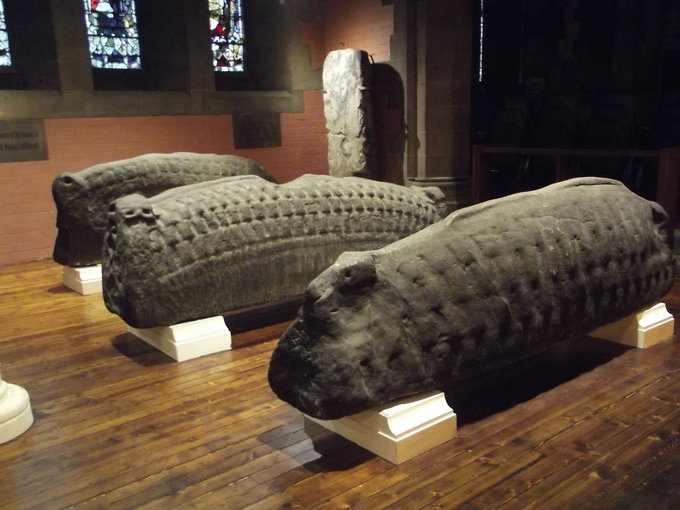One of Scotland’s best collections of medieval monuments, the Govan Stones, are finally getting the recognition they deserve.

They may have lain largely undisturbed in a Scottish graveyard for 1000 years, but ever since the British Museum requested to feature one of the collection’s ‘hogbacks’ in its upcoming exhibition Vikings: Life and Legend, The Govan Stones have attracted attention from across the world.
The Govan Stones, a group of 31 medieval monuments carved in the 9th-11th centuries to commemorate the power of those who ruled the Kingdom of Strathclyde, are believed to originate from the Viking Age, and although they have long been loved by the local community, few outside of Govan have known of their existence in Govan Old Church, Glasgow, until now.
Writing about the stones in History Scotland, Professor Stephen Driscoll from the Archaeology Department at the University of Glasgow, said: “The bold carving style draws upon celtic ornamental tradition, but clearly has been influenced by Scandinavian tastes. The most arresting monuments are the five massive sandstone blocks, commonly known as ‘hogbacks’; they are in fact representations of mighty buildings: lordly halls and, probably, churches.”

Rev Dr Moyna McGlynn of Govan & Linthouse Parish Church, said: “The parish of Govan and Linthouse is delighted that the British Museum has affirmed the importance of the collection of early medieval sculpture from Govan. They have taken one of the hogback stones to London as part of the exhibition Vikings: Life and Legend. The exhibition will open in March 2014 and continues until June 2014, and draws in objects from four continents, evidence of the influence of Viking culture and their mastery of the seas.
“The church members have always known how significant the collection was, and this recognition by the British Museum, we hope, will encourage more visitors to Govan Old Church to see the Govan Stones in their setting.”
Visitors can request to view the stones by appointment for free by emailing info@thegovanstones.org.uk





 © 2024
© 2024